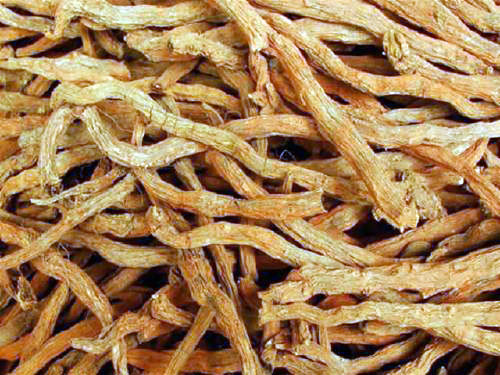This herb has a few different common names, among which the most common ones are Chinese sage, Radix Salviae miltiorrhiza, red sage, danshen, and Tan Shen. Medicinally it mainly means the dried root and rhizome of Salvia miltiorrhiza Bunge, in the family Labiatae. But some other congeneric plants in different regions are also used for medicine, including Salvia bowleyana Dunn, Salvia przewalskii Maxim., Salvia przewalskii Maxim. var. mandarinorum(Diels)Stib., Salvia yunnanensis C. H. Wright, Salvia kiaometiensis Levl., f. pubescens Stib., Salvia miltiorrhiza Bunge var. alba C. Y. Wu et H. W. Li, mss., Salvia digitaloides Diels, S. trijuga Diels, and S. plectranthoides Girff.
It is reported that there are more than 100 medicines based on salvia. Given the fact that the wild resources of wild salvia is dwindling, it fails to meet the clinical needs. Thankfully, so far the cultivation technology has developed rapidly and cultivated salvia miltiorrhiza becomes a good alternative source. However, conventional wisdom tends to believe that wild ones are better than cultivated ones on quality. The medicinal root is usually dug in spring and autumn. Next remove the dirt and then dry them in the sun.

Salvia miltiorrhiza Bunge is a perennial herb, 30 to 100cm high. The whole plant is covered with dense yellowish pubescence and glandular hairs. Roots are long, thin, cylindrical, and covered with earthy red skin. Stems have four prisms and branch on upper part. Leaves are opposite and with odd pinnate. Small leaves are from ovate to broadly ovate and both surfaces are covered densely with white pubescence. It blooms in summer. The inflorescence is terminal and axillary verticillaster, with 3 to 10 flower each round and an alienated raceme arranged by many rounds of flowers. Nutlets are oblong, dark brown or black when ripe, and wrapped in persistent calyx.
Main chemical constituents are fat-soluble and water-soluble ingredients. Fat-soluble ingredients include tanshinone I, tanshinone II A, tanshinone II B, tanshinone III, cryptotanshinone, hydroxytanshinone IIA, methyl tanshinonate, przewaquinone A, Prze-watanshinquinone B, Miltirone, tanshinol I, tanshinol II, Salviol, Tanshialdehyde, and more. Water-soluble ingredients include tanshinol, sal-vianic acid A, B, C, protocatechuic acid, protocatechualdehyde, and so on.
Salvia Miltiorrhiza benefits
Thanks to its possible health benefits, now Salvia Miltiorrhiza has an even expanded medicinal uses, including fat loss, bodybuilding, Acne, anxiety, ischemic diseases like acute ischaemic Stroke, high blood pressure (hypertension), cancer, cholesterol, Depression, Diabetes, Glaucoma, sleeping problem, fertility, Arrhythmia, atrial fibrillation, Fibroid, and so on. And it can be consumed also in forms like decoction, extract, capsule, essential oil, tincture, tea, and compound.

![Diseases, Symptoms, tcm, [tcmwindow.com]](/uploadFile/adImg/2015/11/11/f5cbfcc0-4df5-4646-9b9a-f316651a0199.jpg)





